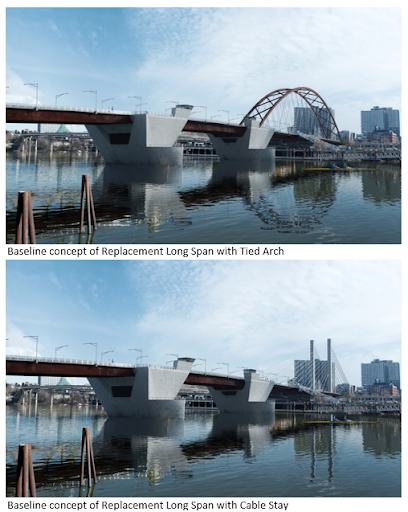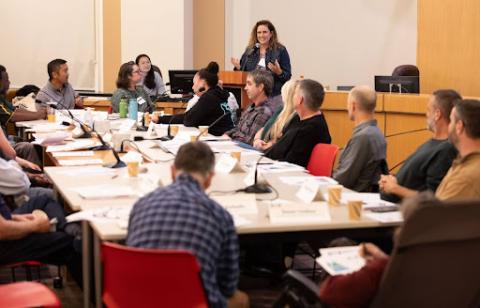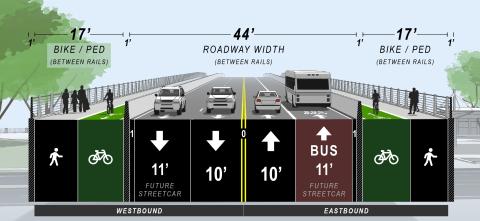
After many years of planning, environmental analysis and community engagement, the ‘Replacement Long-span’ bridge was selected as the Preferred Alternative. The Preferred Alternative is a term used to describe the favored bridge option to move forward in the project. The County based this decision off of input from the community, a Community Task Force and Policy Group, requirements from regulatory bodies and agencies, lower impacts on the environment, best seismic resiliency and lowest cost. The new bridge will have a girder style span on the west approach, a bascule style movable span over the middle of the river, and either a tied arch or cable stayed style long-span on the east approach.
Design of the New Bridge
As part of the Design Phase, the project team will work with architects, engineers and contractors to further develop architectural design variations of the Preferred Alternative to help the County hone in on the specific design details and select a final design.

The project will gather that input from a variety of sources, including the Community Design Advisory Group (CDAG), which will serve an important role during the Design Phase. The group is made up of community members who represent a range of interests and backgrounds from the broader community. The CDAG will provide input to the project team on bridge aesthetics including colors, materials, lighting as well as the shape of certain features on the bridge. To learn more, visit the CDAG web page.
Cross Section
The new Burnside Bridge will have two vehicular lanes in both directions (east and west), with one eastbound lane dedicated to buses, similar to what is out there today. There will be 17-foot wide barrier protected bike and pedestrian paths on both sides of the bridge, creating a safer and more comfortable active transportation experience. The new Burnside Bridge will have the largest bike and pedestrian space of all downtown Portland bridges.
The new bridge will be designed to support future multimodal needs by keeping the existing bus-only lane and allowing for the addition of a westbound bus-only lane as well as a Streetcar line in the future.
The new bridge, in the heart of downtown Portland, will provide a welcoming pedestrian space and viewpoint of the Willamette River, encouraging Portlanders and tourists to walk the bridge.

Design Phase Timeline (dates subject to change):
- January 2024: Design Phase starts
- Summer 2024: Solicit community input on bridge type/form
- Late Summer 2024: Select bridge type/form
- Spring 2025: Solicit community input on bridge aesthetic features
- Summer 2025: Select bridge aesthetic features
- Late 2026: Design Phase complete

